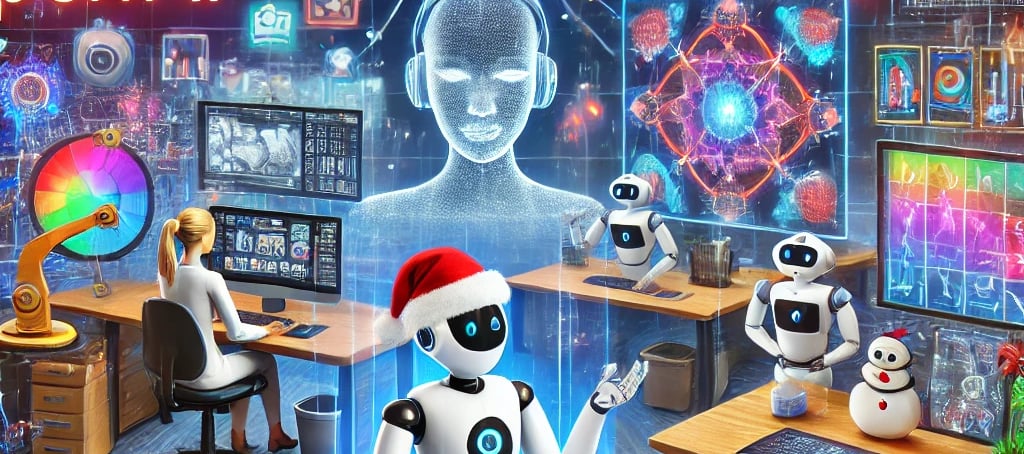The Innovations of OpenAI in Artificial Intelligence Technology (Part One)
Daily Tour of the Innovations Presented by OpenAI, Over 12 Days
12/30/20242 min read


The Innovations of OpenAI: A Journey through the Future of Artificial Intelligence (Days 1 to 6)
OpenAI has revolutionized the landscape of artificial intelligence with its series of innovations presented over 12 days. From improvements in multimodal models to creative integrations, these advancements are transforming the way we interact with technology. This article offers a compact, day-by-day tour of these innovations presented by Sam Harris Altman and his team.
Day 1: Launch of O1 and O1 Pro
The initial day highlighted the launch of the O1 and O1 Pro models, which introduce improvements in speed, accuracy, and multimodal capabilities.
Key Improvements:
Speed: O1 is 50% faster than its predecessor, with a 34% reduction in critical errors.
Multimodality: Handles visual and textual inputs, facilitating the analysis of complex problems like diagrams.
O1 Pro Mode: Designed for advanced users, it solves complex problems with high precision, ideal for fields like chemistry and mathematics.
Day 2: Reinforcement Fine-Tuning
This day brought a learning technique called reinforcement fine-tuning, which optimizes the model with less data.
Relevant Applications:
Legal Assistants: Such as the collaboration with Thomson Reuters.
Medical Research: Such as the genetic analysis of rare diseases.
The model's ability to improve iteratively allows it to effectively address customized domains with few examples.
Day 3: Launch of Sora
Sora, a tool for creating graphics and videos, transformed visual content generation.
Highlighted Features:
Storyboard: Allows sequencing actions and scenarios in videos.
Remix and Loop: Modifies and repeats videos to create attractive visual effects.
Blend: Combines different scenes into a cohesive result.
Sora democratizes audiovisual creation by putting advanced tools in the hands of any user.
Day 4: Canvas for Collaboration
Canvas is a revolutionary tool for collaboration in writing and programming.
Main Functions:
Side View: Allows viewing the chat and document simultaneously.
Collaborative Editing: Users and ChatGPT can edit documents in real-time.
Python Execution: Debugging and running code within the environment.
This tool redefines collaboration in creative and technical environments.
Day 5: Integration with Apple
The fifth day marked a deep integration with Apple devices, enhancing accessibility and functionality.
Benefits:
Siri Integration: Seamless transfer of tasks to ChatGPT.
Camera Control: Real-time visual identification of objects.
Privacy and Control: Allows confirmation of requests before sharing information.
This integration underscores OpenAI's commitment to seamless and secure experiences.
Day 6: Video and Santa Mode
The sixth day presented the incorporation of video and screen sharing in advanced voice mode, as well as the festive "Santa Mode."
Video and Screen Sharing:
Users can show objects or interfaces in real-time and receive help from ChatGPT.
Example: Teaching how to make coffee with visual aid.
Santa Mode:
Interactions with a Santa Claus avatar that responds in real-time.
Perfect for curious children or those seeking holiday joy.
These functionalities combine utility and entertainment, elevating the user experience.
Conclusion
The innovations of OpenAI in this series not only demonstrate impressive technological advancements but also underscore the focus on accessibility, creativity, and utility. From improved models to visual tools and personalized experiences, OpenAI is building a future where artificial intelligence integrates naturally into our daily lives.
If you would like us to explore a specific topic, let us know at futuro@techglobalia.com, or if you require specific information, it will be a challenge for us to address your request.
